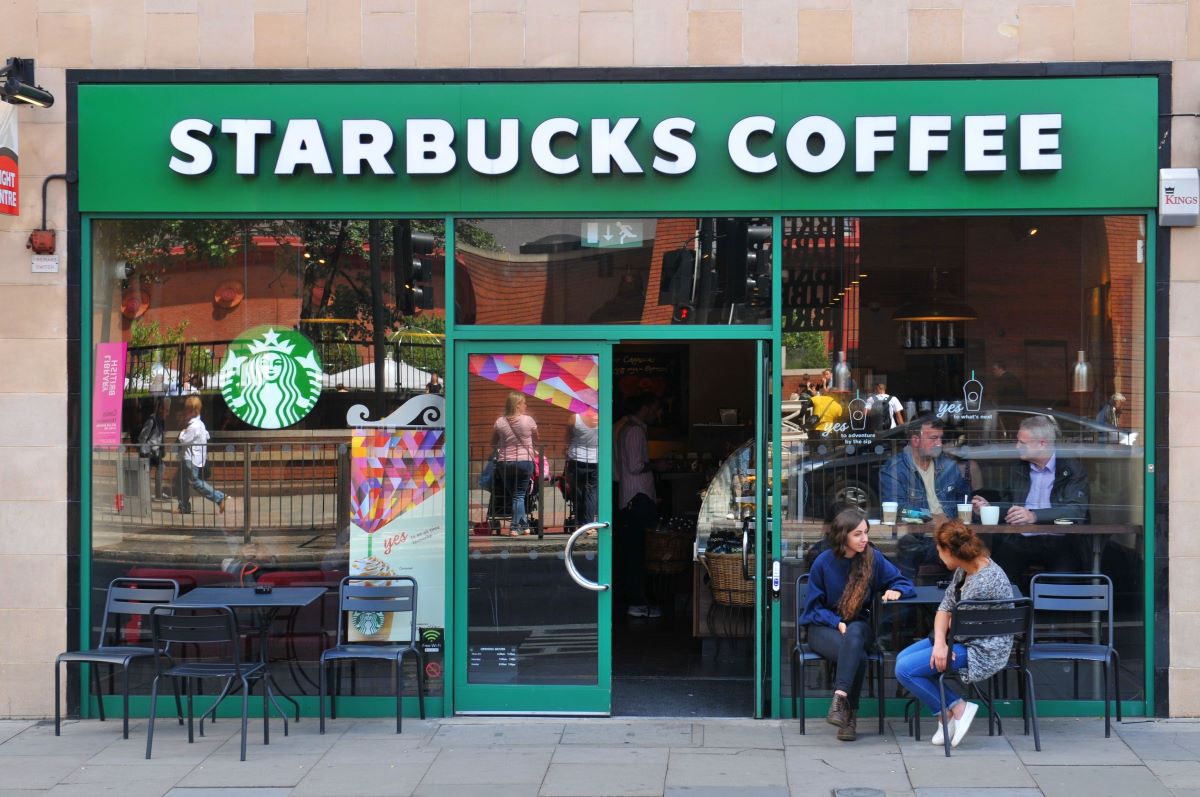Curating the week in wellness March 22nd –26th 2021: Helping employees grow their own; wellness takeaways from Starbucks, and more
The week’s essential content and fresh industry pickings for those dedicated to employee well-being.

Good morning, well-being warriors!
We hope you enjoy this week’s batch of articles and that you find them stimulating, educational and perhaps even inspirational.
As always, please get in touch with any ideas, suggestions or feedback on how we can serve you better. We are grateful for your partnership and for all the excellent work you do.
1. Help your colleagues spring into healthier eating.
There’s something primal and wonderful about growing and eating your own food. (Even if it’s just a few sprigs of basil or an odd tomato in your salad.)
As we enter peak growing season, you might consider expanding your wellness offerings to include virtual gardening instruction. Sound crazy? Well, Hewlett Packard’s doing it for their workers—and gardening startup SmartOrganic boasts corporate clients such as Apple, Patagonia, IBM and Tesla.
Aside from the obvious benefits of eating fresher, healthier food—and the tremendous gloating you’ll feel over mere mortals who have to buy parsley from the store— gardening can be a powerful mental health salve.
If gardening isn’t your employees’ thing, you might also consider providing virtual cooking classes.
2. Time to push harder on inoculations?
As CNN writes, vaccines won’t end the pandemic—vaccinations will. Unfortunately, as the article points out, at least two lawsuits against vaccine mandates have arisen (one from a New Mexico corrections officer and another from L.A. County educators). There will surely be more to come, though vaccine mandate laws tend to favor employers.
Regardless of which tack you take, you should continue to fight misinformation. As EBN notes, employers are “among the most trusted sources of information for the general public around coronavirus and vaccines in particular.” And they should use that clout accordingly, as nearly a quarter of Americans still have no plans to get vaccinated.
So, aside from offering vaccination incentives (like time off or gift cards) and partnering with respected academic institutions or health care experts to boost employee confidence, keep the persuasive messaging flowing. The CDC lists loads of helpful resources to help you fight the good fight.
3. Taking the corporate diversity pledge plunge.
There’s a depressing dearth of diversity toward the top of most organizations. In fact, fewer than 1% of Fortune 500 CEOs are Black. But change might be on the way.
Companies such as Verizon, McDonalds, Domino’s, Nordstrom and now Noodles and Co. have signed onto the CEO Action for Diversity & Inclusion pledge, which entails commitments to pursue meaningful DE&I objectives.
Employee Benefits News writes that Noodles and Co., which has recently moved to bolster engagement through financial wellness offerings and other well-being perks, is trying new ways to push DE&I objectives. It “regularly connects with its employees through listening forums in order to become more aware of what employees need and what they are going through in their daily lives. The company has also implemented an internal inclusion and diversity advisory council and created an inclusion and diversity resource library. Noodles makes regular investments in its employees through a foundation that distributed grants to over 800 employees last year.”
How else are you pursuing DE&I progress? You can learn from what others are doing, such as:
- IOC’s efforts to combat gender inequality
- Qualcomm’s initiative to increase patent diversity
- Principal’s hiring of a “chief inclusion officer”
- Duke Energy’s initiative to hire and promote more women in leadership
4. How to ‘reinvent’ your wellness strategy.
Forbes shares six ways to shift your program, including:
- Well-being must become central to the company and “owned” by senior leader.
- Well-being must be strategic and linked to business objectives.
- Well-being must be holistic to include physical, cognitive, financial and emotional health, as well as career development.
- Well-being must be systematic and integrated into the fabric of the organization.
- Well-being must be data-driven and flexible enough to respond to employees’ needs and preferences.
- Well-being demands authentic, proactive action.
5. Hard lessons from the era of COVID.
Now more than a year into a world-shaking pandemic, it’s wise to look back on what we’ve learned. HR Dive offers a helpful list of articles that share top takeaways on optimizing remote work, implementing mask compliance, approaching layoffs humanely, launching learning and development programs, improving diverse hiring, leading with empathy, and much more.
One more thing we’ve learned (hopefully): No amount of money can compensate for a 95-hour workweek or other variations of “office hell.”
6. Proving the power of wellness champions.
The University of Georgia has published a study that examined the “implementation of physical activity and healthy eating policies in eighteen locations of a large, public health organization.”
The study has yielded some interesting findings—perhaps the most pertinent being the crucial importance of empowering well-being “champions” throughout your organization. UGA researchers found: “Worksites that had wellness committees also saw higher uptake of wellness policies,” and that “The logistics of rolling out a policy may be trickier than a central headquarters realizes, so it takes champions at local sites to ensure the unique needs of their employees are met.”
7. Is reading the next wellness trend?
The Boston Globe reports how a local construction management company is helping its employees connect, destress and find balance during this stressful season. One initiative proving popular with employees is a “page turner” challenge that’s turned into a Zoom-based book club.
The piece notes the many benefits of reading. The Globe writes:
“As for the reading challenge, just a few minutes reading a day can be beneficial for mental and emotional health, Walsh says, citing a 2017 UK study. ‘The past year, I feel like everyone’s waking up to bad news, lots of anxiety; the pandemic is out of our control. Reading is a healthy activity to get people away from their blue screens. It’s a self-soothing activity,’ she says. ‘It’s been tied to a lot of health benefits both physically and mentally. It’s a way for people to escape.’”
8. Taking cues from Walgreens and Starbucks to make wellness programs more effective.
Fierce Healthcare writes that wellness pros eager to increase program buy-in should learn from customer loyalty giants such as Nike, Walgreens and Starbucks. The piece notes: “Across industries, designers of loyalty, rewards and membership programs know how to motivate customers to engage with brands in ways that are mutually beneficial. Those learnings can be applied to wellness programs to improve results, expand reach and create robust relationships with members.”
9. 575 billion reasons to invest in employee wellness.
Forbes provides this week’s ammo to persuade skeptical execs on why well-being merits ongoing funding and full-throated backing. The piece says: “Candidates will not pursue opportunities at companies that don’t have holistic wellness programs, and employees will leave. Leaders, take note: while 70% of you believe you provide good access to health and wellness benefits and support, only 23% of your employees agree.”
It also notes: “Sick workers cost US-based employers $575 billion in 2019. That was before the Covid-19 pandemic! Imagine what that figure will be for 2020, and the rates of burnout, anxiety and stress that are emerging as trailing indicators of the shutdown suggest that 2021 figures will continue to increase, with particular costs related to mental health even as we’re at less physical risk of illness.”







